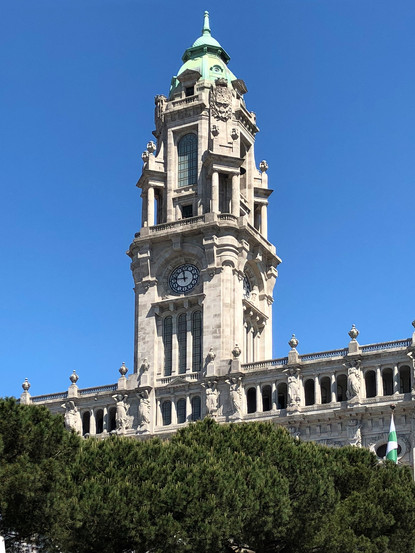Porto was the first city we visited in 2018 on our 30th anniversary vacation. It is the second largest city in Portugal and is located in the north on the Atlantic coast at the mouth of the Douro river. A beautiful, historic town, Porto is situated on slopes that lead down to the river, so sightseeing on foot is good exercise. The city's most iconic landmark is the Dom Luís rail, road and pedestrian bridge (below), completed in 1886 and designed by Théophile Seyrig, who beat out Gustave Eiffel for the project. Interestingly, Seyrig was a protégé and former partner in Eiffel's firm and they collaborated on an earlier Porto project, the Maria Pia rail bridge of similar design.
Porto is home to a number of wineries that produce port (it has to be produced here to be called 'port'). Before road transportation became more reliable and economical, grapes were transported from the Douro Valley vineyards to the wineries by river. Today, the boats are used for tourism only. Most of the port-producing wineries are actually located in Vila Nova de Gaia across the river. The photograph above was taken there, looking across at Porto. It is definitely worth paying for one of the winery tours, most of which explain the port-making process and offer tasting of different ports (ruby, LBV, tawnies) at the end.
A ubiquitous Portuguese delicacy is the pastel de nata, a type of egg custard tart. These desserts go well with port, or just about anything else for that matter. This little ensemble welcomed us to our hotel room. (There were four but two disappeared quickly!)

Another Porto landmark, visible from just about everywhere in the city, is the Clérigos Church tower. We happened to be there during the weekend of the WRC Rally de Portugal street race.
[Scroll left/right to view gallery]






































Commenti